Name the Mexican fine-dining dish most prepared outside of Mexico. OK, a clue, it doesn’t include a taco. OK, another clue, there are no chiles. The most prepared dish outside of Mexico is, according to Chef Flavio Ramirez Jr., the Caesar Salad.
The extraordinary salad, perhaps the best salad ever created, had its origins in a restaurant in Mexico. There are a few variations to its history, but here is the story that Flavio Ramirez tells, which also happens to be the story that Don Day tells.
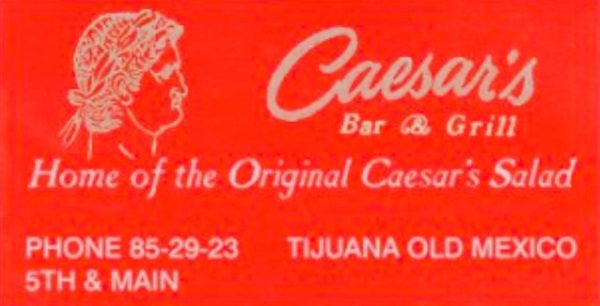
Cesare Cardini and his brother Alessandro moved from Milan sometime after World War One and settled in San Diego. Recognizing an opportunity (prohibition prevented the pleasures of alcohol in the good old USA), Cesare opened a hotel in Tijuana.
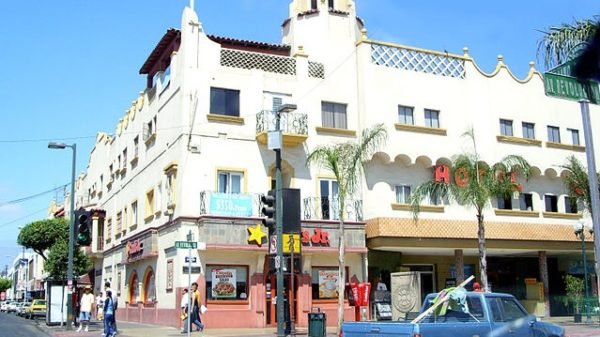
For the details of how the salad was invented, I will use the story told by Cesare’s daughter, Rosa, that appeared in her 2003 obituary in The Telegraph:
“The family legend assiduously recounted by Rosa was that on Independence Day 1924, business was so brisk that the kitchen began to run short of ingredients. Cardini decided to cobble together a salad from leftovers, including romaine lettuce, olive oil, raw egg, garlic, parmesan cheese and Worcestershire sauce. The dressing was originally mixed at the table and used to coat the lettuce leaves, which were presented stem outwards so that it could be eaten with the fingers, in the time-honoured Italian fashion.”
With its tableside creation and presentation, the dish soon became the darling of Hollywood stars. Then in 1953, it received its greatest honor when a group of Paris’ leading chefs pronounced it to be “America’s greatest contribution to world cuisine”.
I can’t remember the exact year I had my first Caesar Salad but it was around 1970 and, not only was it my first Caesar, it was my first taste of Romaine lettuce. There was only one lettuce in my life until that time. It was called iceberg. It was boring and it was bland but it was also inoffensive and very crispy. Even in the late 1970s, iceberg still represented 95% of all lettuce sales in North America.
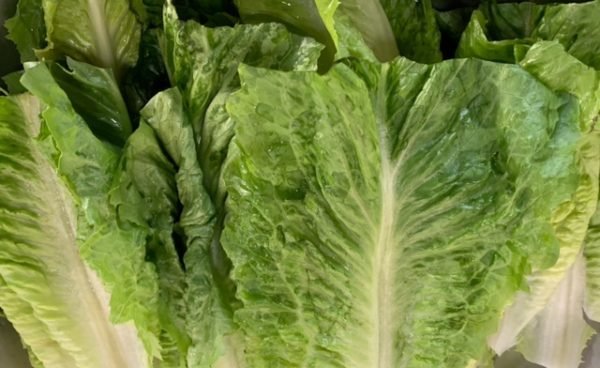
This new lettuce, this Romaine or, as it was sometimes called Cos, was also very crispy but it also had this hint…and just a hint…of bitterness.
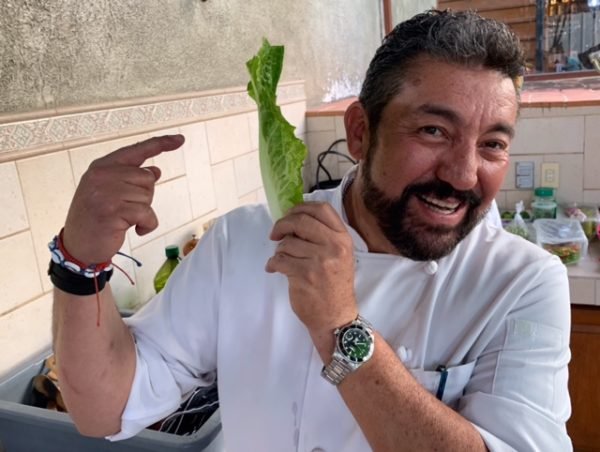
“Do you know what we call this lettuce in Mexico?”, said Flavio Ramirez, holding a leaf up beside his face. “We call it lechuga orejona, big ear lettuce.”
Flavio is a private chef and a couple of weeks ago I had the pleasure of watching him pay tribute to Cesare Cardini, making a Caesar Salad to his original recipe.
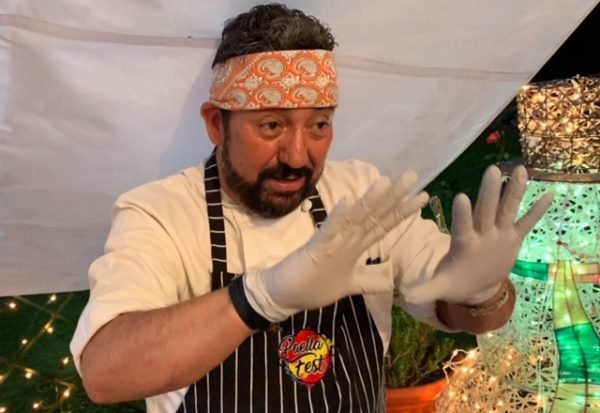
“Well, almost his original recipe”, said Flavio. “Some people question whether the original had anchovies but a Caesar without anchovies…well it just isn’t a Caesar.”
“And from what I’ve read, there weren’t croutons in the salad back in the twenties”, Flavio continued, “but if you want croutons in your Caesar, I will give you croutons.”
We wanted croutons.
I thought of sharing Flavio’s Caesar Salad recipe with you but I thought, even better might be sharing the photos I took of him creating it along with some of his comments.
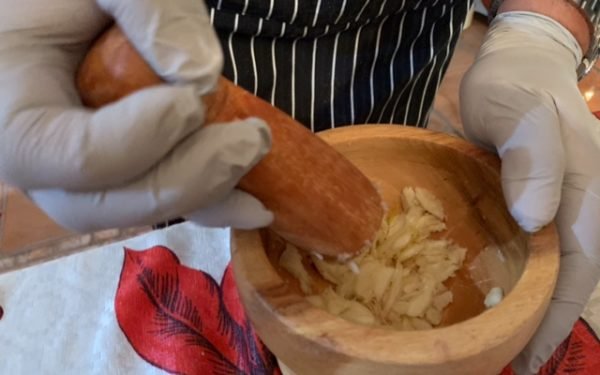
“You could use a food processor to crush the garlic but Cesare Cardini didn’t have any fancy machinery.”

“The oil from the anchovy can is just as important as the fish. I crush up the anchovies very small because there are people who wouldn’t put a fillet in their mouth but have no problem when the fish is lost in the oil.”

“I think the wooden bowl is almost as important as what goes into it. A Caesar just doesn’t look right unless it’s in wood.”
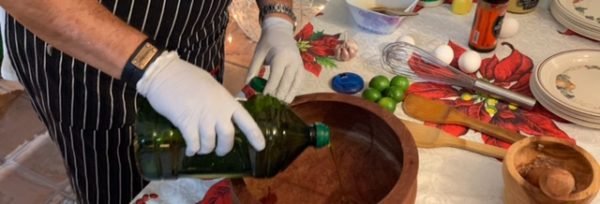
“Use good quality, Italian, extra virgin oil. It’s worth the extra cost.”
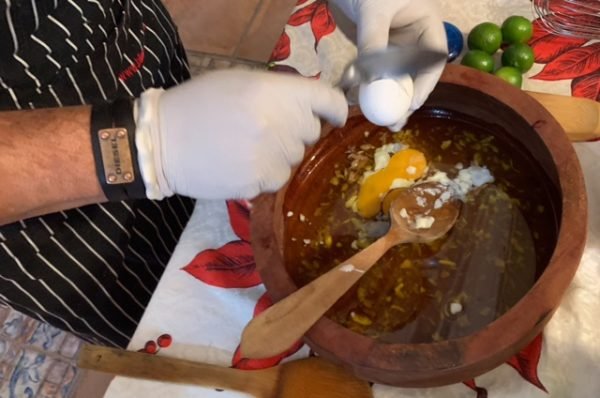
“Some people use raw eggs. I coddle them, put them in boiling water for a minute to protect against salmonella.”
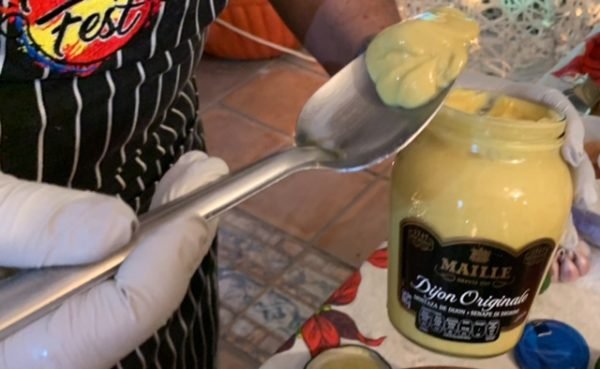
“French Dijon mustard not American yellow mustard.”
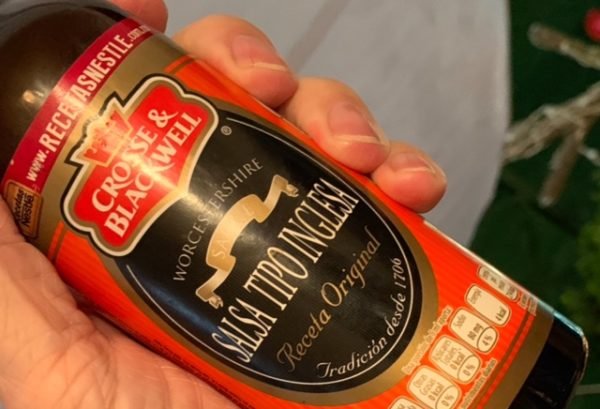
“Bottled Worcestershire…or as we call it Salsa Tipo Inglesa…is fine. Bottled Caesar dressing is not. Bottles were created to bring wine to tables not salad dressing.”

“Most recipes call for lemon juice but, knowing how difficult it is to find lemons in this country, I wouldn’t be surprised to find out Cesare Cardini used limes.
“The same rule for the cheese as the olive oil. Go for the good stuff. Always aged Parmesan Reggiano. Never anything that’s seen a Kraft logo.”
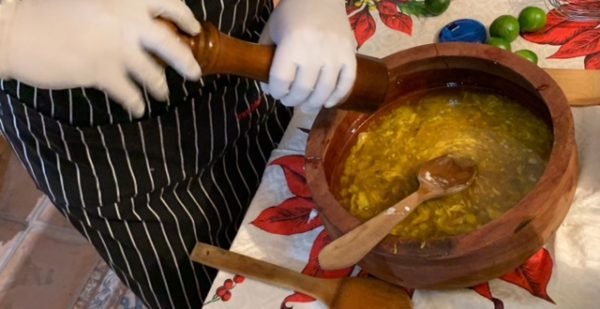
“A little salt but a lot of pepper. More than you might think it needs.”

“Very fresh lettuce. Never tear it up. And toss it gently so it doesn’t bruise. And, remember, it was meant to be eaten with your fingers not a fork.”
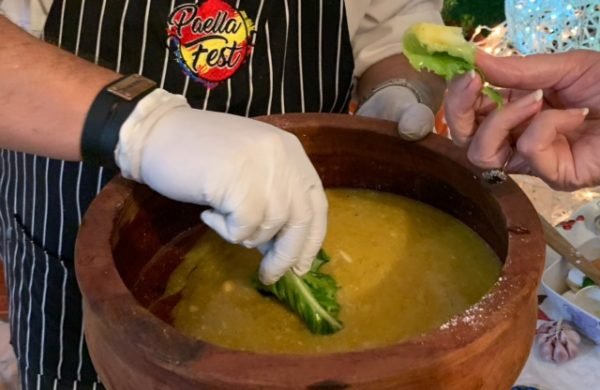
Watching Flavio Ramirez make his Caesar is almost as good as eating his Caesar. Flavio Ramirez Sr. was a professional entertainer and, like father, like son. Passion is the obvious word. The charming repartée when he’s adding each of the ingredients. The cheeky smile when he sees how much you are enjoying his historically-important creation.
Most people hire Flavio Ramirez to come to their home and prepare his award-winning paella. If you do hire him, you know what I suggest as the starter.
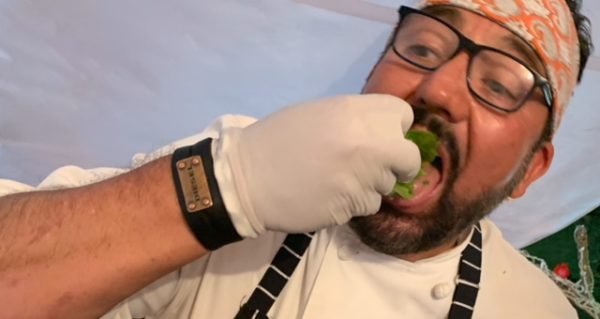
If you would like Flavio Ramirez to cook for you, you can contact him by email at flaviotxmx@icloud.com or by telephone at 558 673 9322. If I find his prices very affordable, you probably will too.

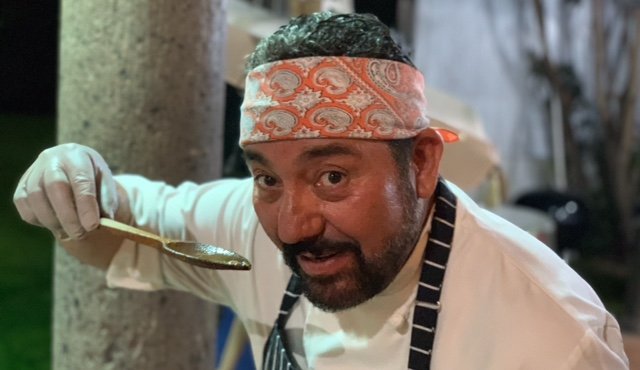
You might like to try the Caesar Salad at Casa Nostra .
And in general for dinner too. It is a dining experience.
A great story – made my day!
I still remember the first time I ate a Caesar Salad at a hotel in Ixtapa. I was in my 20’s. I thought that was the best thing I had ever eaten!!!